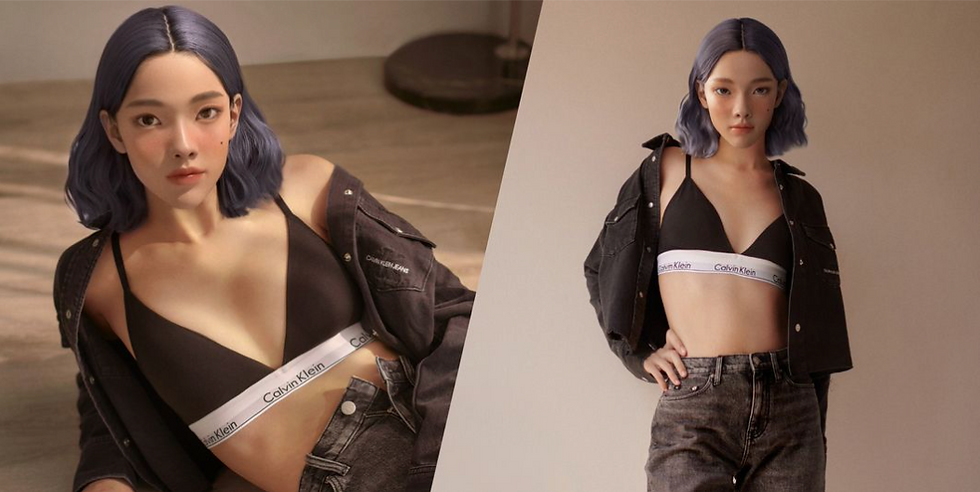In the ever-evolving landscape of advertising, staying ahead of the curve often means embracing innovative technologies. In recent years, the integration of artificial intelligence into advertising campaigns has emerged as a game-changer, revolutionizing how brands create personalized captivating content at scale and speed.
Gone are the days when a brand or an advertising agency spends weeks in a war room planning the creative campaign, another few weeks executing and retouching the final images before they get seen by customers. Sometimes, by the time you finish the shoot, the idea itself might already be outdated. Budget aside, I have taken a closer look at brands that have recently leveraged AI to create incredible campaigns.
JW Pei: A Glimpse of AI Precision
Scrolling through social media platforms like Instagram, it's not uncommon to encounter targeted ads seamlessly blending into our feeds. While many advertisers don't explicitly disclose their use of AI, keen observers can detect telltale signs such as subtle discrepancies in facial features or proportions. JW Pei utilized AI technology to craft campaign visuals featuring a model wearing their sunglasses as depicted in the image below.
For a brand that usually produces almost exclusively studio-shot content, this was new and different. When I saw the ad I didn’t even realize it was AI until I discussed it with a colleague and we noticed the blouse lining isn’t natural and the skin and hair are overly airbrushed for a brand that usually prefers more natural textures.

Nutella: Personalization at Scale
Nutella embarked on a groundbreaking advertising campaign by harnessing the power of AI to generate an astounding 7 million unique jar labels. By leveraging algorithms to produce an array of distinct designs, Nutella shattered the boundaries of traditional packaging and embraced personalized marketing on an unprecedented scale.
The interesting part that this campaign was produced in 2017, long before AI became trendy and AI tools became accessible. It is likely that they used an in-house model to produce the peronalized jars. If you wanted to do this today as a brand, you could use tools like PhotoShop GenAI fill.

Chilli Beans, Brazil: Redefining Creativity
In Brazil, fashion brand Chilli Beans turned to AI to infuse fresh perspectives into its advertising campaigns. Collaborating with photographers and developers, Chilli Beans explored the capabilities of AI in generating captivating visuals that resonate with their audience. Despite facing challenges in perfecting the aesthetic appeal, the speed and efficiency of AI-driven creativity left a lasting impression, highlighting its transformative potential in the creative landscape.
The question that many brands have is whether they disclose that the imagery is AI. A very valid decision to be made. If you’re like Chilli Beans you might use it to your advantage to signal that you’re forward thinking and transparent. The negatives you can judge for yourself.

Vakko, Turkey: The Intersection of Art and AI
In Turkey, Vakko L'Atelier Ice Cream ventured into the realm of AI-driven advertising with an outdoor and digital campaign that seamlessly blended artistry and technology. Partnering with '74STUDIO, Vakko embraced AI as a tool for innovation, pushing the boundaries of traditional advertising methods. While the integration of AI may not be overtly apparent, its subtle influence underscores the brand's commitment to exploring new horizons in marketing and creativity.
This campaign blanketed the streets in Istanbul, gracing both large biillboards in the hottest spots, the inside of the stores as well as social media channels. And all of that for the cost of a few cents. Incredible.

Levi’s: Bridging the Gap with AI Models
Levi's made waves by introducing AI-generated models to complement its e-commerce platform. Teaming up with LaLaLand.ai, Levi's sought to enhance representation by featuring AI models showcasing diverse sizes, skin tones, and ages. While they may not entirely replace human models, they serve as a complementary element, enriching the brand's inclusivity and representation efforts in the digital realm.
Now imagine the very near future of this campaign? It won’t be models you don’t recognize, it will be your very self. Now that is a scary yet kind of exciting future.

Calvin Klein, Thailand: Embracing Virtual Influencers
In a bold move that blurs the lines between reality and virtuality, Calvin Klein Thailand embarked on a groundbreaking partnership with Katii, a virtual influencer. Created by Plan B Media Public Company, Katii embodies the essence of Calvin Klein's extroverted and playful image, resonating with audiences in the rapidly evolving digital landscape of Thailand.
While this campaign isn’t quite AI, especially since the influencer is managed by any agency, the technology behind creating the model does have AI. However, in order to push it to be fully AI, this influencer in the near future will be creating and posting it’s very own content… aka be an artificial intelligent influencer. Wild times ahead, brace yourself for a time that a brand like Calvin Klein can create an army of AI influencers instantly.

Final Thoughts:
The integration of AI into advertising campaigns has ushered in a new era of creativity, personalization, and innovation.
From personalized packaging to AI-generated models and virtual influencers, brands are leveraging AI to engage audiences in many ways while pushing the boundaries of traditional advertising norms.
As AI continues to evolve, just like with every other wave of innovation, the brands that embrace the technology fully will reap the rewards. If you’re a brand interested in exploring how to leverage Generative AI solutions for your campaigns, get in touch with abby.rifkin@tryitonai.com.